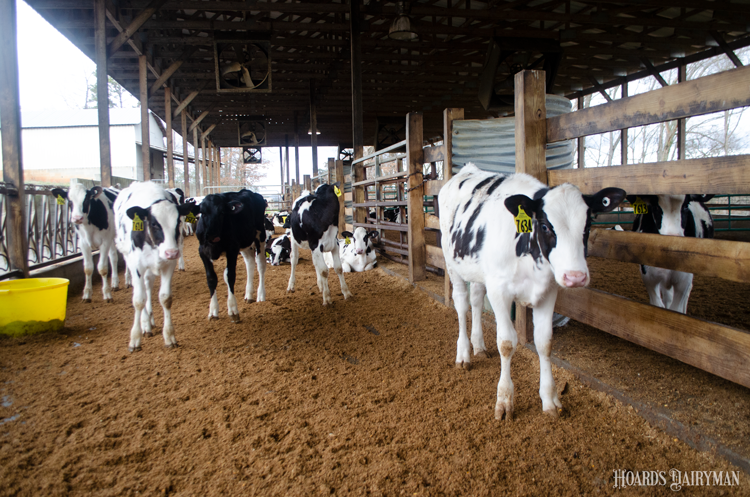
“Compensatory growth never works in our favor,” said Margaret Quaassdorff during a Cornell Cooperative Extension webinar. The regional dairy specialist emphasized that regardless of an animal’s genetics, it is going to struggle to pay back its rearing costs if it is not well-grown and prepared to reach the herd’s mature body weight when it enters the milking herd. That translates to lost money on what is one of the most expensive enterprises on the farm.
Estimates of the cost of raising a heifer to calving vary, but Quaassdorff’s colleague Betsy Hicks described a 2019 Cornell survey of 26 dairies that found the average investment was $2,505 per head. That data included both farms that raised all heifers on site and a handful that used some degree of custom growing. The average age at first calving for those herds was 22.5 months.
The most expensive stage of life is when calves are on milk. Hicks said the surveyed farms averaged a cost per head per day of $3 to $3.50 during preweaning. Over $1.50 of that was spent on labor.
Total costs then fell below $1.50 per head per day after weaning before climbing back up as heifers got closer to calving and were moved onto more expensive precalving diets.
Overall, 15.4% of the farms’ total heifer raising costs were attributed to the time period from birth to 200 pounds. But this is also when approximately 8% of an animal’s growth occurs, Hicks said. “This is our most impactful time,” she described.
Growing from 201 pounds to 700 pounds accounted for 31.3% of an animal’s total rearing cost, Hicks continued. This prepuberty time frame is when animals are spending energy and time putting on muscle and frame. Giving them sufficient resources to do so allows them to express their genetic potential and sets them up for future reproductive and health success, Quaassdorff added.
That’s important to do during the prepuberty phase because after an animal experiences the hormonal changes around puberty, fat tissue is more of a priority for nutrients than muscle and structure, Quaassdorff explained. “We lose this opportunity if we hit this stage and think we’re going to catch up,” she said.
Paying it back
It takes time for animals to pay back their rearing costs after they enter the milking herd. Often, that occurs sometime in the second lactation. Maximizing the number of productive lactations a cow reaches is more likely when you’re keeping the “right” cows longer, Quaassdorff said. That’s possible when you raise the right heifers, and drawing that line requires a conversation with your farm team to discuss your goals for the herd.
As you determine which animals are the right ones for your farm to raise, consider how many you need by looking at calf mortality rate, age at first calving, calving interval, and culling rate. Then factor in the goals of the business — are you looking to expand, capitalize on beef-on-dairy breeding, sell heifers, or do something else? All of this information will help you focus in on where you will get the most value from that $2,500-plus investment per heifer on your farm.








